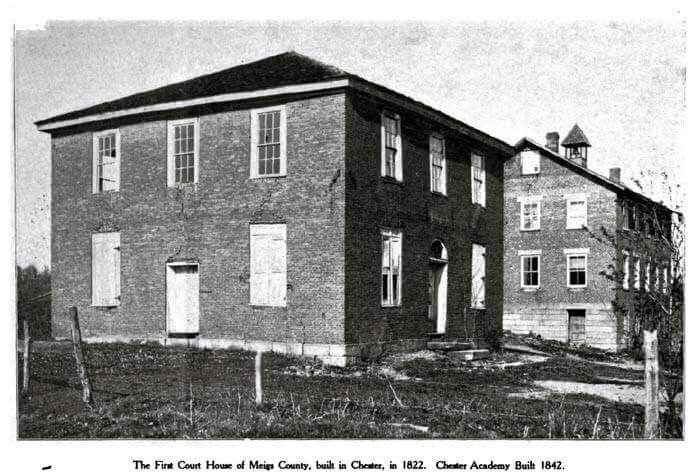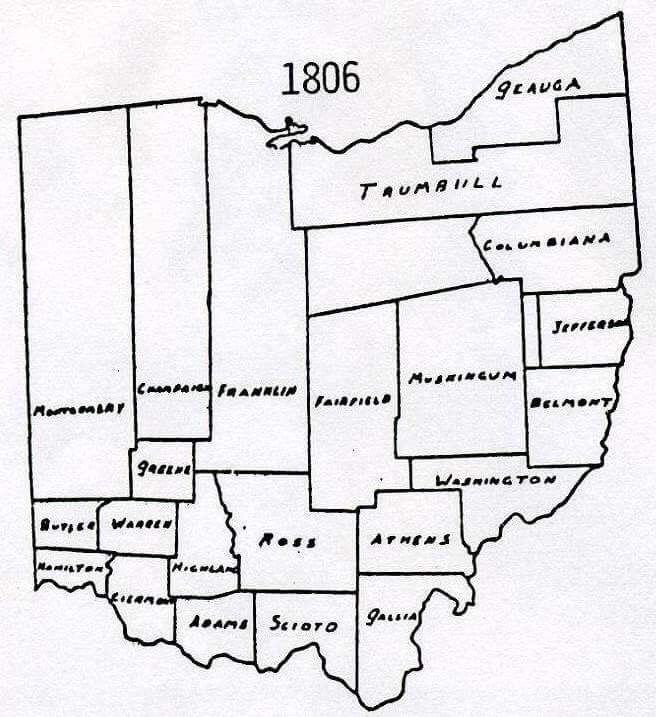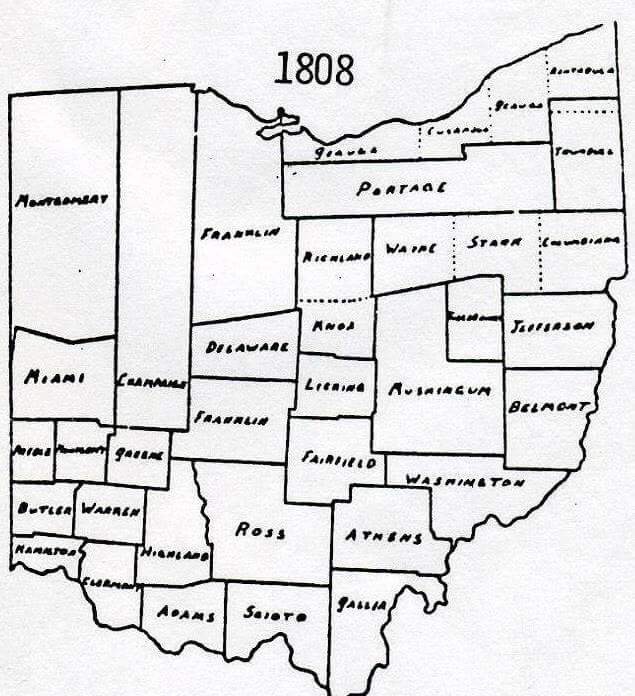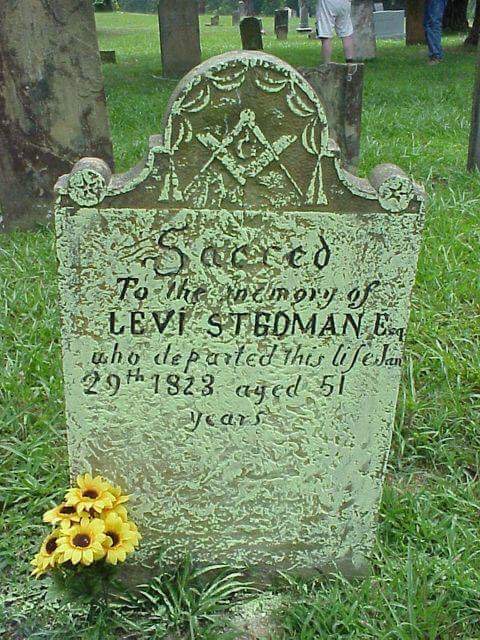Levi Stedman, ‘forgotten pioneer’ of Meigs County

Chester Courthouse.
(This is a new weekly feature to the Meigs Independent Press. Each week a new topic of local history will be covered.)
Whenever you look back at the early history of Meigs County, or, more aptly, the early history of the area that would become Meigs County, you will see the name Levi Stedman appear in abundance. In Stillman Larkin Carter’s 1908 Pioneer History of Meigs County, Stedman is mentioned 34 times, while Valentine B. Horton’s name appears a mere 21 times. Levi Stedman has become one of the “forgotten pioneers” of Meigs County.
Born on September 19, 1771 in Tunbridge, Orange County, Vermont, to Alexander Stedman (1746-1814) and Sarah (Cushman) Stedman (1748-1802), Levi Stedman was the second of nine children. He married Dorothy Cowdery on March 27, 1794, and the couple had ten children. Stedman and fellow traveler Peter Grow arrived in the territory that was to become Meigs County in 1798 and built their first cabins in the eventual town of Chester. A year later, their families joined them.
The Honorable Brewster Higley settled his family near the mouth of the middle fork of Leading Creek in the spring of 1799. At the same time, Stedman was building his grist mill.
It became necessary that a road should be opened between [the mill and Mr. Higley’s settlement]. Accordingly, it was agreed that Mr. Levi Stedman and a party from Shade [R]iver and a company from Leading [C]reek, under the direction of Mr. Brewster Higley, should meet near the place where little George Russell lived at the forks of Thomas [C]reek. The parties . . . proceeded to mark out the road to their respective homes. The Leading [C]reek party marked the way very near where [it] is now established. When they passed through a very thick wood on what is now the Stow farm and on through the low gap to a place by the west line of the McGuire land . . . night had overtaken them, the darkness was intense, not a gleam of light to direct them, when one of their number thought of an expedient, which was to get into the channel of that little stream, exceedingly crooked as it was, and to follow its meanderings to the mouth, which was open ground, so they all got safely home. This occurred in 1804 or 1805. (Carter, p. 97)

Athens County was formed out of part of Washington County in 1805, and a year later Levi Stedman settled on over 420 acres at the mouth of the Hockhocking River with his family. At this time, the Hockhocking served as the dividing line between Athens and Gallia Counties. Stedman lived on the Gallia County side about a half mile below the county line. In 1808, Stedman decided to annex all but one small section of his land to Athens County, creating the present Orange Township line. He went on to build the first log mill in Chester Township in 1808 on the Shade River. It survived until 1863 when it was destroyed during Confederate General John Hunt Morgan’s infamous raid.

In 1811, Athens County removed part of Troy Township and created Rome Township. Stedman, along with other prominent early settlers like Asahel Cooley and Daniel Stewart, were part of the new township. Stedman moved within a year and returned to the area that was to become the village of Chester. He opened a store, farmed, ran a saw mill, kept a tavern, and owned a distillery. By 1812, Stedman was a Justice of The Peace and became the Chester area’s first postmaster. In addition to all of Stedman’s varied roles, Athens County records show him as a County Commissioner in 1815, 1817, and 1818.
While delving into county politics, Stedman’s businesses began changing hands. Dr. David Gardner and his brother Charles bought out the store and filled it with goods from New York, Boston, and Philadelphia in 1818. Samuel Grant took charge of the log mill in 1820 and added new machinery.
Meigs County was formed from parts of Gallia and Athens Counties in 1819. In Edgar Ervin’s Pioneer History of Meigs County, Ervin describes how a farmhouse was used as the first county seat in Middleport and the residents expected it to remain that way. Three commissioners were appointed to preside and oversee county operations until October of 1819 when successors would be elected. Levi Stedman, Elijah Runner, and William Alexander were appointed as Meigs County’s first commissioners. After several seats of justice ranging from “farmhouses to under a tree at some farmhouse” and a great struggle to fill county offices, the Ohio General Assembly appointed Elnathan Scofield of Fairfield County, Joseph Martin of Pike County, and David Mitchell of Scioto County to find and create a “fixed” county seat.

Benjamin Smith offered 20 acres of land on the Ohio River in Middleport to become the county seat. In April of 1821 the General Assembly adjourned without voting to grant the seat to be in Middleport. In April of the following year, Meigs County Commissioners John Barr, William Vance and William Dunn selected 50 acres of land in Chester and a courthouse was built that same year on land that would be the permanent seat of Meigs County government. The land was donated by none other than Levi Stedman.

Stedman took ill and died at the age of 51 on January 29, 1823 and was buried in Chester Cemetery. Sometime in the early part of the 19th century, Levi Stedman became a Master Mason in Paramuthia Lodge No. 25 in Athens, Ohio, but no record has been found of any of his Masonic rolls even though his tombstone bares the Square and Compass.
As the old Ohio flows….
Jordan D. Pickens










